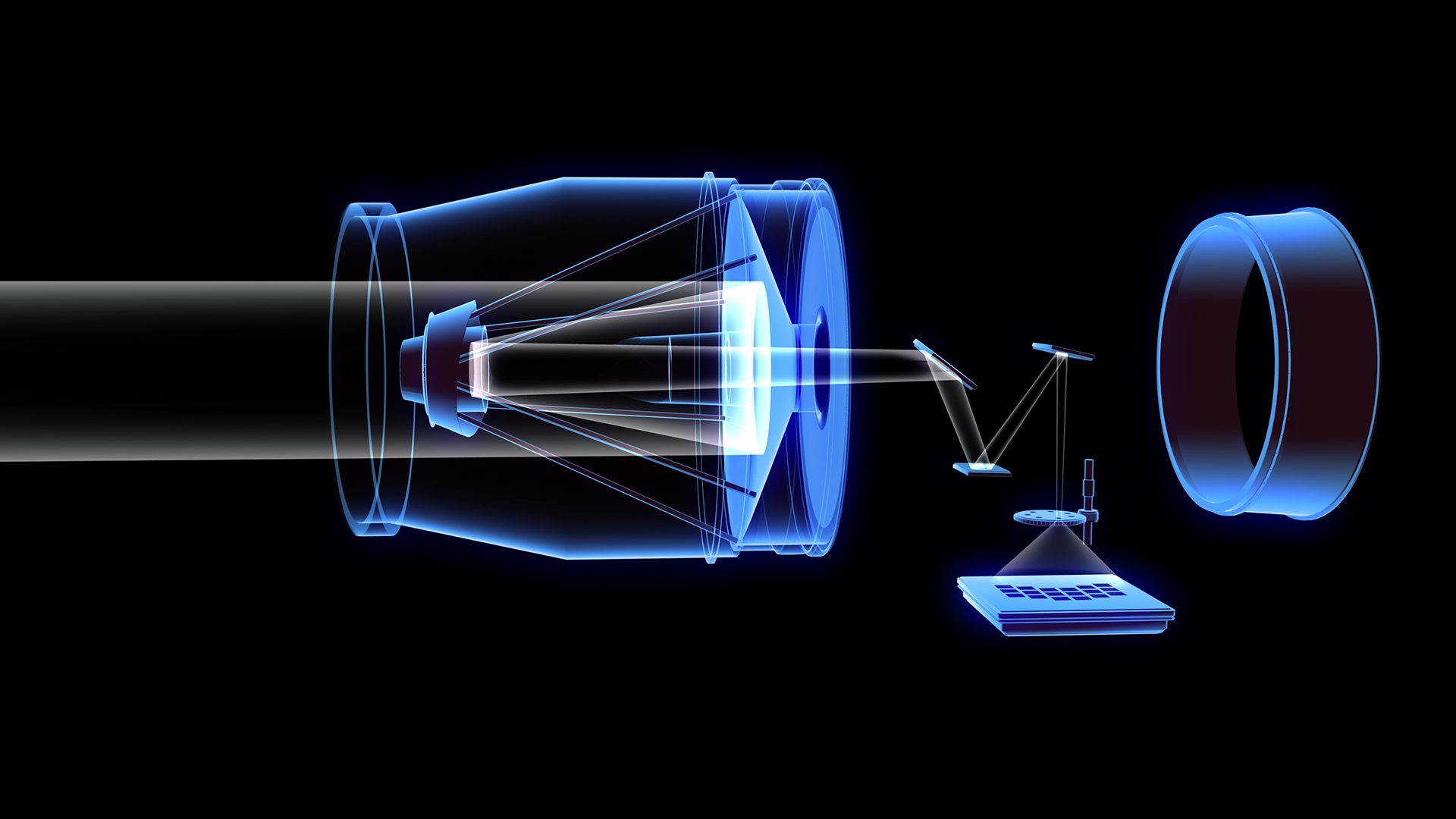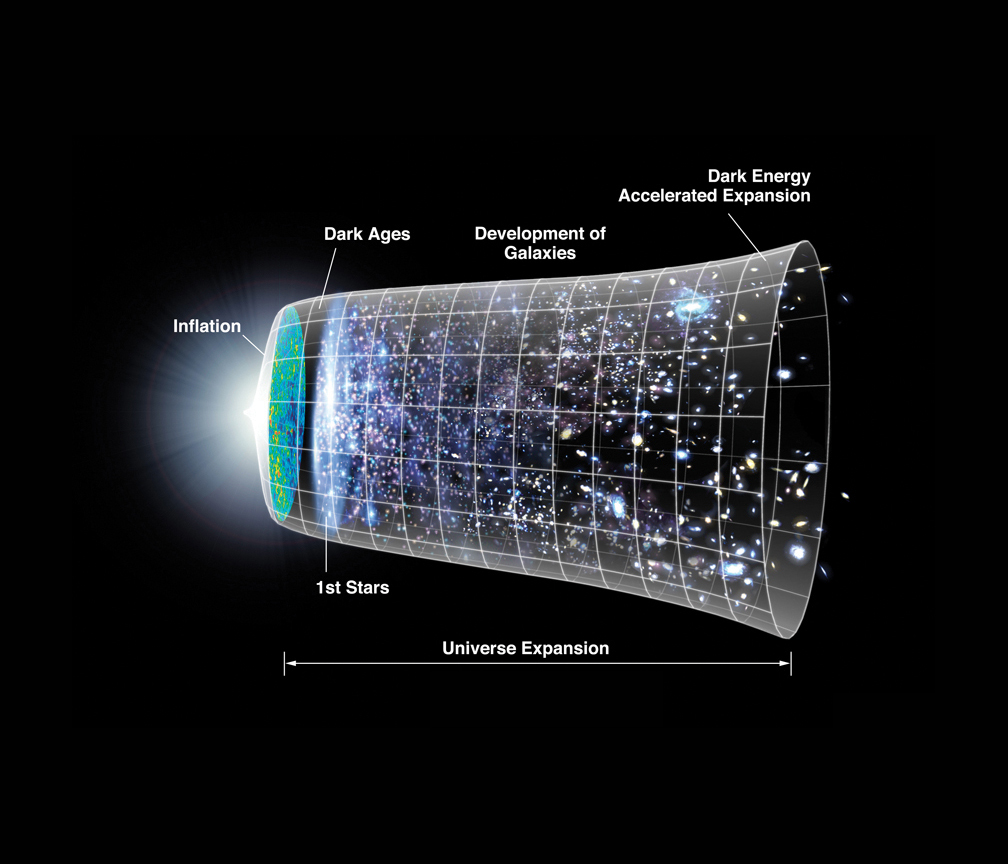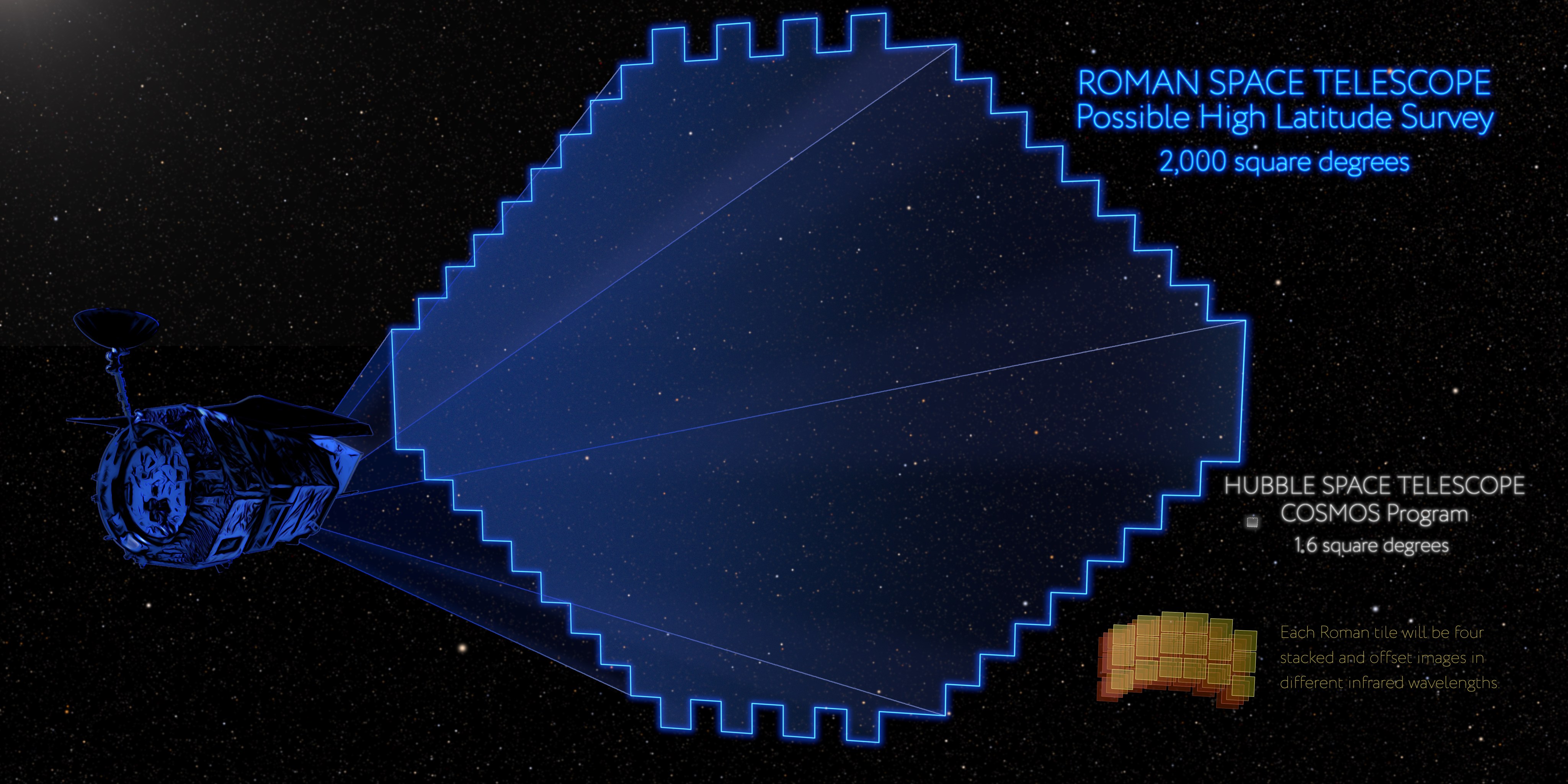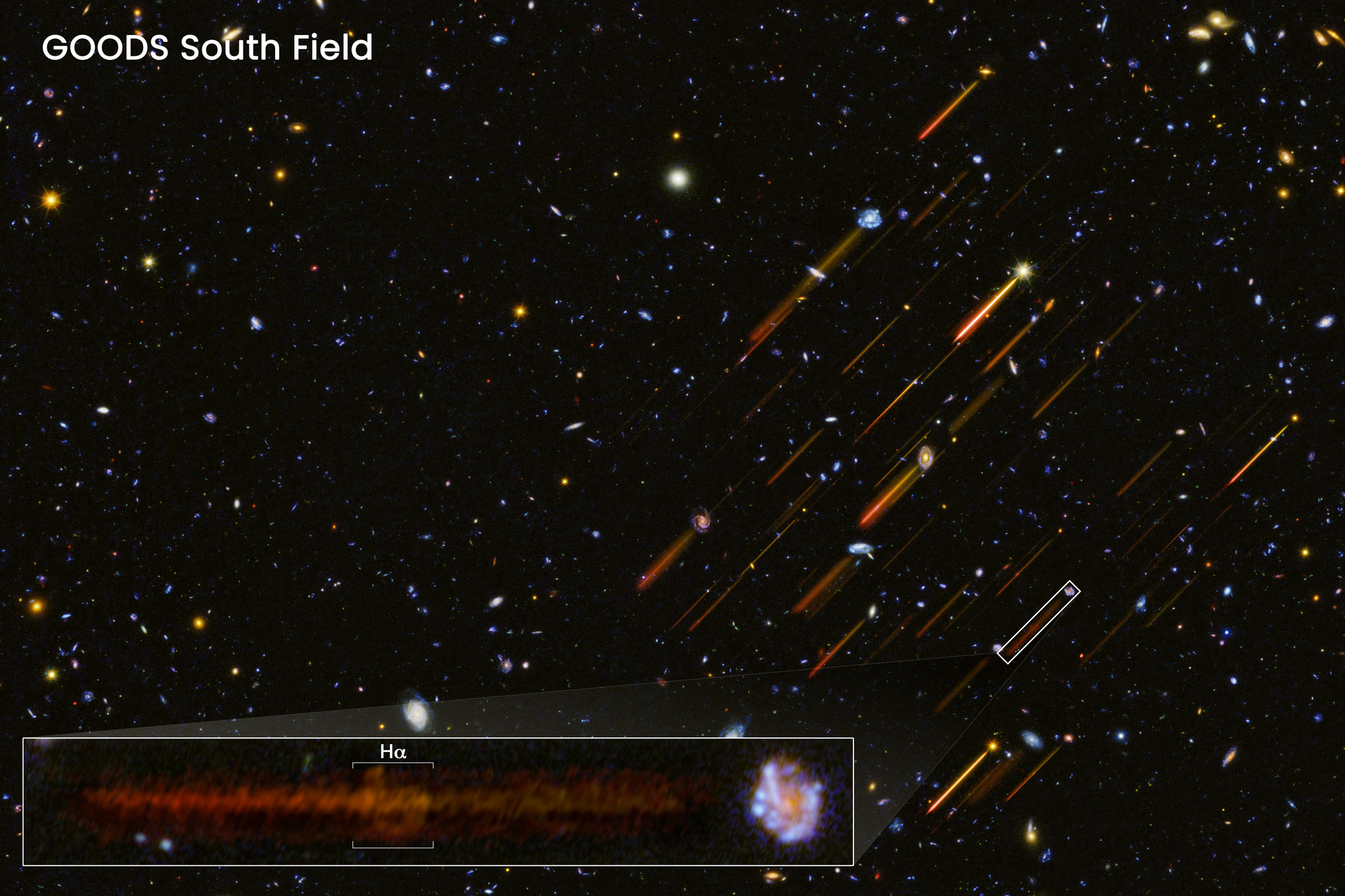This survey will combine the powers of imaging and spectroscopy to uncover hundreds of millions of galaxies. Roman's wide and deep 3D images will allow astronomers to explore the structure and expansion of the universe as it evolved through cosmic time.
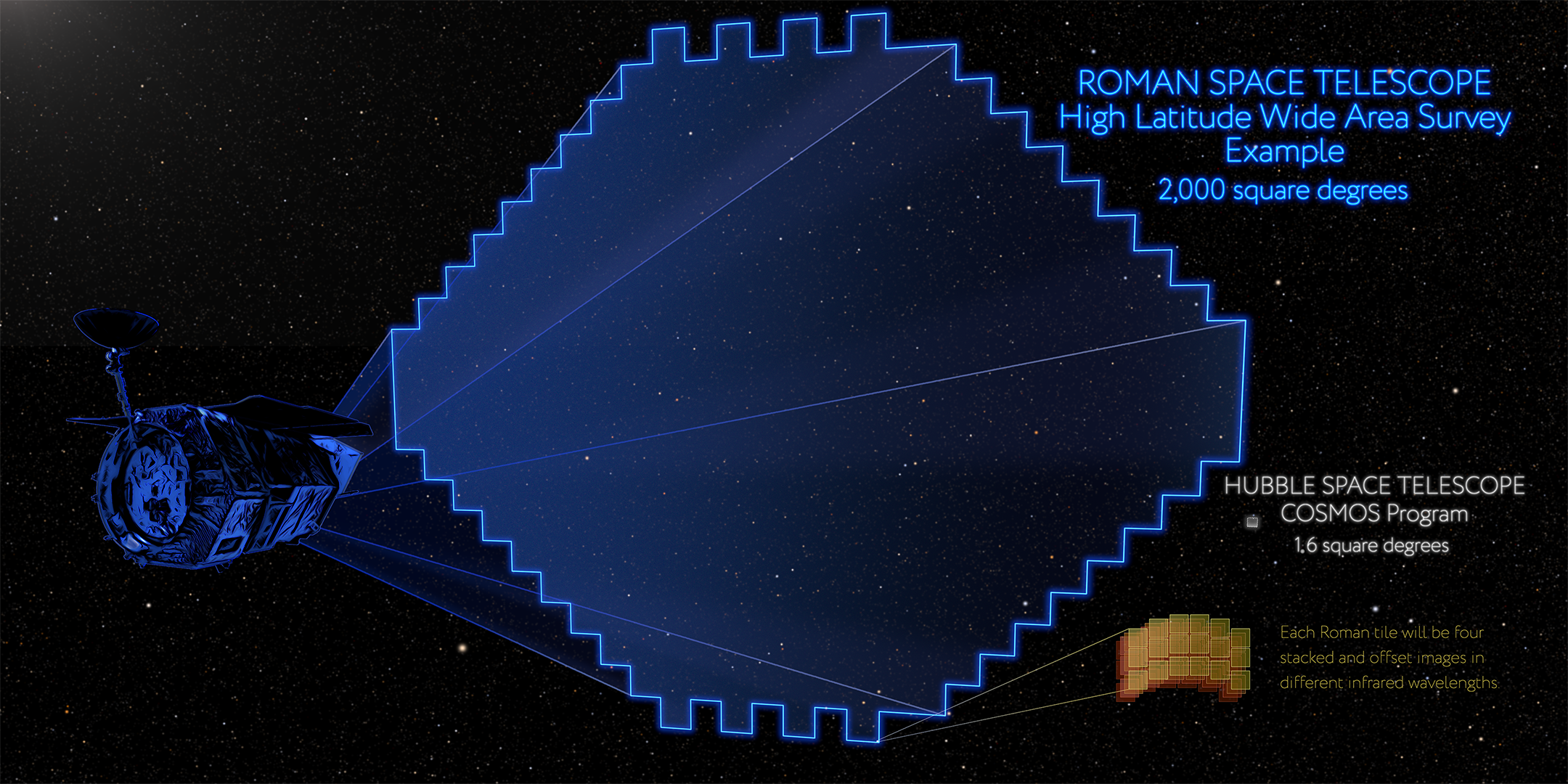
The High Latitude Wide Area Survey will cover 2,000 square degrees (about 5% of the sky) in just over seven months. It would take Hubble or Webb around a thousand years to image such a large sky area.
The combination of imaging and spectroscopy across an enormous field of view will enable two main cosmological techniques: galaxy clustering and weak gravitational lensing. The first measures the exact positions of hundreds of millions of faint galaxies. Weak lensing measures how the images of galaxies have been distorted by the gravity of intervening matter. With its wide, deep view, Roman will allow scientists to study the structure and evolution of the universe and to explore the concept of cosmic acceleration as never before.
Roman’s treasure trove of data from this survey will offer practically limitless opportunities for astronomers to explore all kinds of cosmic topics, including dark matter, dark energy, and the cosmic web.
Dark Matter
This strange matter makes up about 27% of our universe, but it’s only visible through its effects on “normal” matter that we can see. Roman will fill in gaps in our understanding to help us understand what it’s made of.
The imaging component of Roman’s High Latitude Wide Area Survey will reveal precise positions, shapes, and sizes of hundreds of millions of faint galaxies and probe how their images have been distorted by intervening mass (made of both normal and dark matter). Astronomers will use these observations to map dark matter more precisely than ever before and explore how it has changed over cosmic time.
Dark Energy
This mysterious cosmic pressure makes up about 68% of the universe and acts as a sort of repulsive force that’s accelerating cosmic expansion.
The spectroscopy component of Roman’s High Latitude Wide Area Survey will analyze galaxies’ wavelengths to pin down their distances and learn the universe’s expansion rate in different cosmic eras. Studying the structure and evolution of the universe will help discern between the leading theories that attempt to explain why the expansion of the universe is speeding up: a new energy component dubbed dark energy or the breakdown of Einstein’s theory of gravity on cosmological scales.
By studying the shapes and distances of billions of galaxies, Roman will help us understand the effects of dark energy 10 times more precisely than current measurements.
Cosmic Web
By studying different cosmic eras, Roman will piece together how the largest structures in the universe (like clusters of galaxies) emerged and grew over time. When it was very young, the universe was filled with a nearly-uniform sea of charged particles. Over hundreds of millions of years, tiny clumps drew in more material and grew to form the first stars.
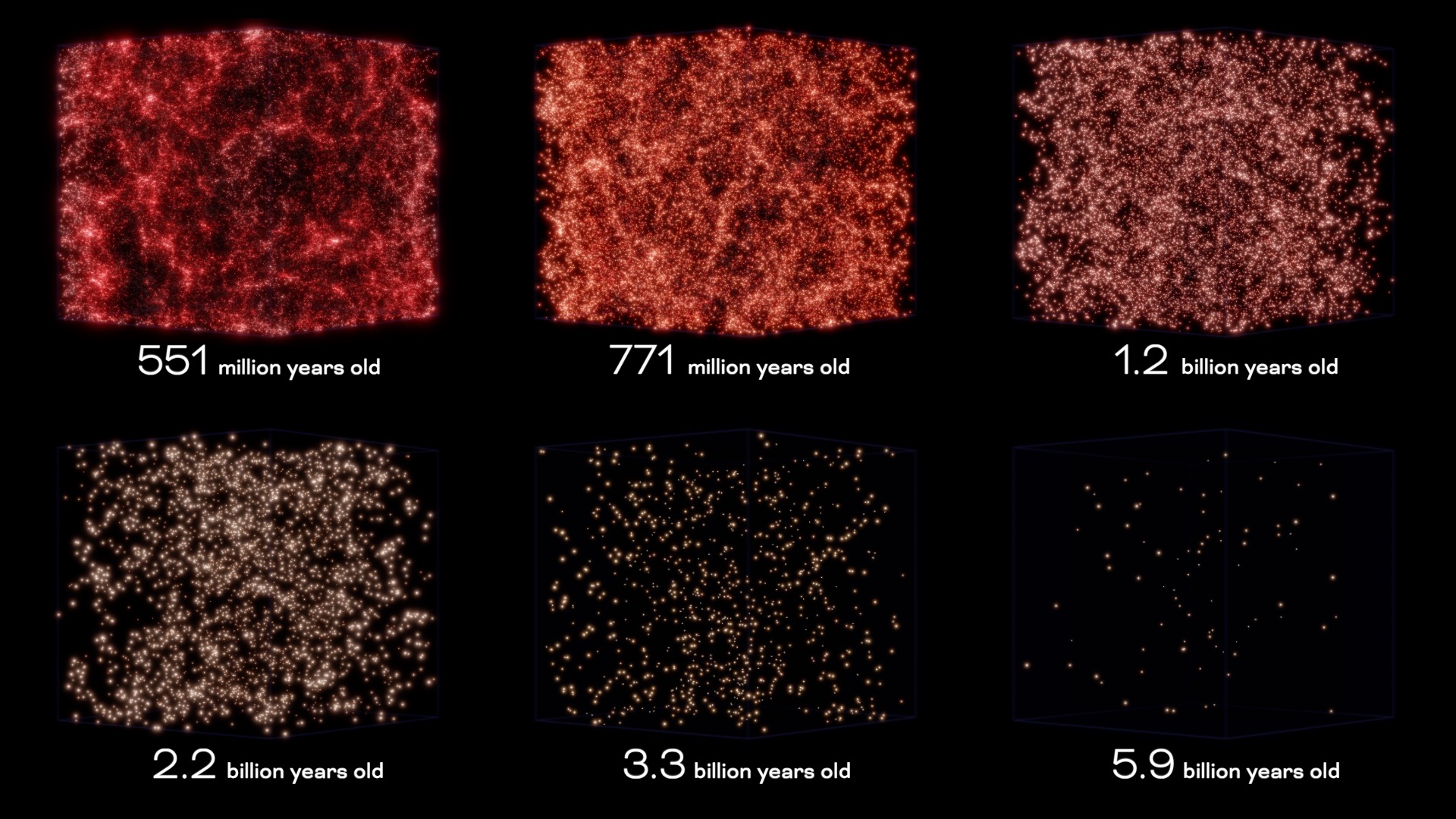
Stars gravitated together toward dark matter, and eventually evolved to form the vast network of structures we see today, known as the cosmic web. These studies will help us learn more about galaxy formation physics and dark matter, a key actor in the process.
Astronomers will use Roman’s enormous, deep 3D images to help us understand the fundamental nature of the universe.
Featured News
Wide Field Instrument
The Wide Field Instrument (WFI) is a 300-megapixel infrared camera that will allow scientists to explore the cosmos all the way from the edge of our solar system to the farthest reaches of space.
Learn More